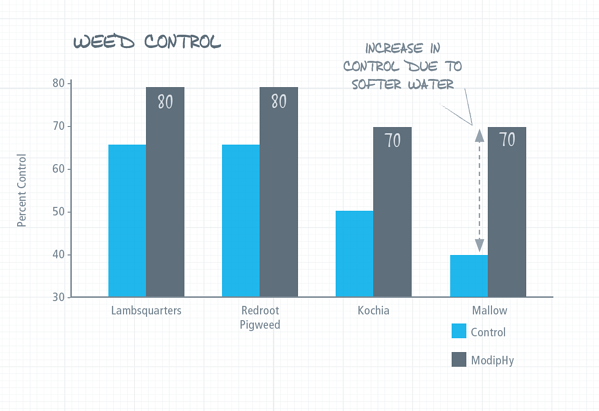Are your herbicides not performing like they use to? Maybe it’s time to check your water!
Water is one of the cheapest inputs into a crop and can be one of our biggest assets. The quality of the water utilized is a key factor in determining the efficacy of a pesticide or foliar fertilizer application.
Does your water make the cut?
Readings of over 200 TDS means you need to take action by sending you water to the lab for further analysis.
Watch the video to learn:
- The status of water quality across Canada
- Tools available to determine your quality of water
- How to utilize a water hardness calculator to determine your water hardness inactivation potential
- How to proactively deal with hard water
Get the most out of each pass – Use ModipHy

Water Conditioning = Delivers the Genetic Potential
Whether it’s a preseed burndown, in-crop or pre-harvest, attention should be paid to spray water quality because hard water (cations) can bind to pesticides – decreasing efficacy. By softening the spray water in the tank, ModipHy helps ensure that growers get the most out of each pass over the field.
- Adding ModipHy to your tank mix can maximize chemistry efficacy by balancing your pH and softening hard water.
- ModipHy neutralizes the free ions present in hard water, preventing pesticides from reacting with hard water cations like magnesium, iron and calcium.
- ModipHy’s surfactant package ensures that more herbcide gets into the leaf reducing the effect of these plant-borne cations.
- ModipHy helps glyphosate penetrate dusty or dirt-covered weeds.
To learn more about water quality and how to deal with hard water, please contact your local rep or visit our website at www.atpag.com




